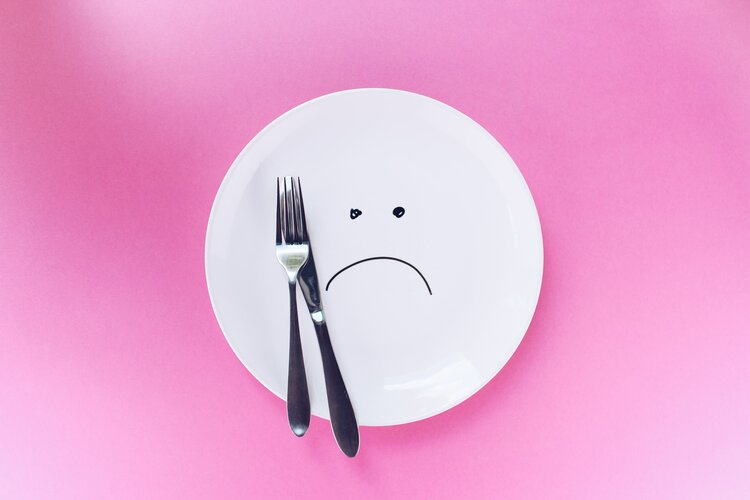The Anita Siek Blog
The Brandfetti Podcast
The Wordfetti
Shop
Podcast
Personal
Content Magic
Business
Lawyer (yep-a-dee-yep, I used to write things people never read) turned Brand and Copy Strategist, and Word-ucator for brands like you, who want to ZIG when others zag.
Hi, I'm Anita!
How to increase the conversions on your website

Credit: Charlotte Lovely
Great website. Check. Smashing photos. Check. An awesome product or service – you betcha. And according to the analytics dashboard of your website backend, you’re even getting good traffic.
People are coming. But people are also leaving – without buying, or booking, a thing.
Here are some potential reasons why:
Your website is information overload
A study by the fancy folk over at Microsoft says that you only have around 8 seconds to grab a reader’s attention before they start looking elsewhere. That’s not a lot of time. So you’d want to be maximising the use of that time octopus.
Ultimately, as a business owner, the goal is to get your website visitors feeling intrigued and curious within moments of landing on your homepage – not overwhelmed.
So, keep it cool. Pace your information, and encourage your readers to scroll through all of your pages. Don’t pour everything on the table so there’s nothing for them to find under their seats.
A good way to do this is to think of your brand as a story.
Your homepage is your why: your unique selling point (USP), your mission statement and your front and centre products or services. Your about page is your who: the fine folk delivering the goods or your brand persona. Your services, products or portfolio page is your what and how: the main event, be it a thing or an outcome. And your contact page is your where: your process (shipping, returns) or how they find you.
It’s a narrative, and you’re hooking them in for every chapter.

You have too many CTA’s
If you want your readers to opt-in, ask them to opt-in. If you want them to buy, ask them to buy. Pushing them to sign up to your newsletter, visit your shop, accept your freebie eBook, read about the face behind the brand and contact you for more information all at once is major overkill.
The more choices they have, the less likely they are to make one. (No joke. This is a proven study: Lyengar & Lepper, 2000).
Having a “call-to-action” that considers your reader’s thought sequence is also important here.
For example, if you are selling a house, asking your readers to “Buy Now” is a tad premature. Instead, consider something like “Take a Virtual Tour Today”. Much more applicable and well aligned with the buyer journey.

Your target audience is… the public
When you write with the public as your audience, your readers will feel like just another transaction.
So dig deeper and write to the emotions of your target audience by really understanding where your brand fits in with their life, and what internally and externally drives them.
What do they like? What do they do as a job? What do they do when they’re not at this job? What’s their income? What are their goals? Are they married? Single? Kids? What do they care about? What stresses them out? What are they having troubles with? And how do you solve that gripe for them?
Remember, you are writing to humans. By understanding your ideal audience, and getting to know what they like and don’t like – you will be one step closer to winning both hearts and minds.

The three magical questions to Cinderella-fy your website:
1. Who are you? – Is it clear what <insert your brand> is about? What is your mission? And what is your purpose?
2. What do you do? – Is it clear to your audience, what it is that you do within moments of landing on your home page?
Ensure this is in plain English, and use language your clients would use, so their emotive purchasing dial will move to a place where they feel more comfortable.
3. Why you? – Is it clear to your readers why your brand is unique? What makes you different from your competitors? And why they should buy from you?

Psst. Some tips for this one:
Unique is not just about your great service or quality product – these are expectations and are not unique.
People will find out whether your product is of great quality, and whether it was a great service after they have purchased from you.
A great USP will attract potential clients before they get to the purchasing stage. This can perhaps be a lifestyle you create through your service or an experience you deliver through packaging. Whatever it is, you need to position your USP in a way that even if your competitor had a stall two blocks from you, your clients would walk the two extra blocks to buy from you instead of your competitor.
There you have it.
Traffic and clicks are nice, but they, unfortunately, do not equate to revenue.
So take 15 minutes off when you have a moment, and do an eagle eye audit on your own brand’s website using the above pointers.
Want to get more copy, brand and content tips? Listen in on Brandfetti and follow me here and the team here

Check out these popular posts


